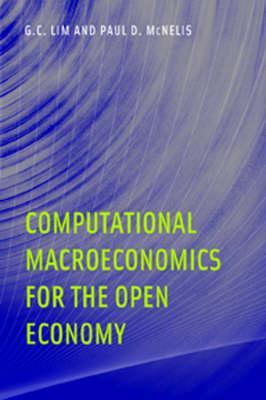Computational Macroeconomics for the Open Economy

Computational Macroeconomics for the Open Economy
Policymakers need quantitative as well as qualitative answers to pressing policy questions. Because of advances in computational methods, quantitative estimates are now derived from coherent nonlinear dynamic macroeconomic models embodying measures of risk and calibrated to capture specific characteristics of real-world situations. This text shows how such models can be made accessible and operational for confronting policy issues. The book starts with a simple setting based on market-clearing price flexibility. It gradually incorporates departures from the simple competitive framework in the form of price and wage stickiness, taxes, rigidities in investment, financial frictions, and habit persistence in consumption. Most chapters end with computational exercises; the Matlab code for the base model can be found in the appendix. As the models evolve, readers are encouraged to modify the codes from the first simple model to more complex extensions. Computational Macroeconomics for the Open Economy can be used by graduate students in economics and finance as well as policy-oriented researchers.
Descrierea produsului
Policymakers need quantitative as well as qualitative answers to pressing policy questions. Because of advances in computational methods, quantitative estimates are now derived from coherent nonlinear dynamic macroeconomic models embodying measures of risk and calibrated to capture specific characteristics of real-world situations. This text shows how such models can be made accessible and operational for confronting policy issues. The book starts with a simple setting based on market-clearing price flexibility. It gradually incorporates departures from the simple competitive framework in the form of price and wage stickiness, taxes, rigidities in investment, financial frictions, and habit persistence in consumption. Most chapters end with computational exercises; the Matlab code for the base model can be found in the appendix. As the models evolve, readers are encouraged to modify the codes from the first simple model to more complex extensions. Computational Macroeconomics for the Open Economy can be used by graduate students in economics and finance as well as policy-oriented researchers.
Detaliile produsului












